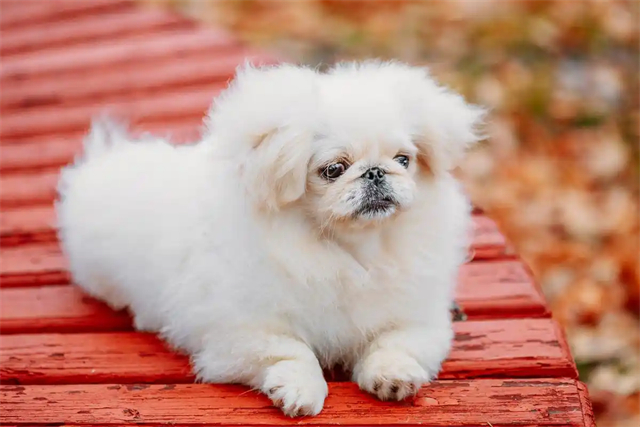The Pekingese, a small yet regal breed with roots in ancient China, is beloved for its loyalty and distinctive appearance. However, like many purebred dogs, Pekingese are prone to specific health issues. For owners in Europe and North America, understanding these conditions is critical to ensuring a long, happy life for their pets. This article outlines the most common Pekingese health problems, actionable prevention strategies, and care tips tailored to modern pet owners.
 Article source:https://www.petwoah.com/Pet Site-https://www.petwoah.com/838.html
Article source:https://www.petwoah.com/Pet Site-https://www.petwoah.com/838.html
1. Brachycephalic Airway Syndrome (BAS)
Symptoms: Snoring, noisy breathing, exercise intolerance, overheating.Article source:https://www.petwoah.com/Pet Site-https://www.petwoah.com/838.html
Why It Happens: Pekingese have flat faces (brachycephalic skulls), which can lead to narrowed nostrils, elongated soft palates, and restricted airways.Article source:https://www.petwoah.com/Pet Site-https://www.petwoah.com/838.html
Prevention & Care:Article source:https://www.petwoah.com/Pet Site-https://www.petwoah.com/838.html
- Avoid strenuous exercise, especially in hot or humid weather.
- Use a harness instead of a collar to reduce neck pressure.
- Consult a vet about surgical correction for severe cases.
2. Eye Problems
Pekingese are prone to several eye conditions due to their prominent eyes:Article source:https://www.petwoah.com/Pet Site-https://www.petwoah.com/838.html
A. Corneal Ulcers
- Causes: Trauma, dry eye, or foreign objects.
- Signs: Squinting, redness, excessive tearing.
- Care: Regular eye cleaning with vet-approved solutions; avoid rough play.
B. Progressive Retinal Atrophy (PRA)
- Symptoms: Night blindness progressing to total vision loss.
- Prevention: Genetic testing breeders; schedule annual eye exams.
3. Skin and Coat Issues
- Common Conditions: Allergies, hot spots, and dermatitis.
- Triggers: Food sensitivities, pollen, or flea bites.
Management:Article source:https://www.petwoah.com/Pet Site-https://www.petwoah.com/838.html
- Brush daily to prevent matting and distribute natural oils.
- Use hypoallergenic shampoos and omega-3 supplements.
- Keep skin folds clean and dry to avoid infections.
4. Luxating Patella (Slipped Kneecap)
Symptoms: Limping, "skipping" steps, or sudden leg lifting.Article source:https://www.petwoah.com/Pet Site-https://www.petwoah.com/838.html
Risk Factors: Genetics, obesity, or injury.Article source:https://www.petwoah.com/Pet Site-https://www.petwoah.com/838.html
Prevention:Article source:https://www.petwoah.com/Pet Site-https://www.petwoah.com/838.html
- Maintain a healthy weight with portion control and low-calorie treats.
- Provide joint supplements like glucosamine after consulting your vet.
5. Dental Disease
Why It’s Common: Crowded teeth in small mouths trap food and plaque.Article source:https://www.petwoah.com/Pet Site-https://www.petwoah.com/838.html
Signs: Bad breath, difficulty eating, red gums.
Solutions:
- Brush teeth 2–3 times weekly with dog-safe toothpaste.
- Offer dental chews approved by the Veterinary Oral Health Council (VOHC).
Proactive Care Tips for Pekingese Owners
1. Regular Vet Checkups: Biannual visits help catch issues early.
2. Climate Control: Keep your home cool; avoid prolonged outdoor time in summer.
3. Weight Management: Obesity exacerbates joint and breathing problems.
4. Grooming Routine: Trim nails, clean ears, and check skin folds weekly.
Final Thoughts
While Pekingese dogs require attentive care due to their unique health risks, responsible ownership can significantly improve their quality of life.
Partner with a veterinarian familiar with brachycephalic breeds, invest in preventive measures, and prioritize gentle exercise. By staying informed, you’ll ensure your Pekingese remains a joyful companion for years to come.

